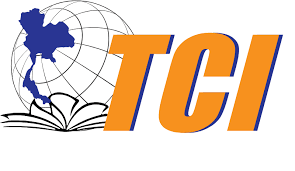Architecture for Cloud-based Advanced Application Development Tools of Container Platform
Keywords:
tools, containers, advanced applications, tool architecture, cloud computingAbstract
Containers are an ideal tool for developing and deploying software. Organizations can leverage container architecture to enhance software development processes and more efficiently deliver high-performance applications. This research aims to 1) develop an architecture for advanced cloud-based application development using container platforms and 2) investigate user satisfaction with the developed architecture. The tools employed in this study include the architecture for cloud-based advanced application development using container platforms and satisfaction surveys regarding this architecture. The sample group was chosen through a specific purposive sampling technique and divided into two categories. The first category consisted of expert samples, including five computer science professors who specialize in the review of architectural tool design and development. The second category included 77 computer science students who were enrolled in Advanced Application Development course during the second and third academic years of 2022 at the Faculty of Science and Technology, Rajabhat Chiang Mai University. The analyzed data was collected using descriptive statistics, which included frequency, percentage, mean, and standard deviation.
The study results comprise two parts: 1) the architecture for advanced cloud-based application development using container platforms, which identifies three user groups within the system: administrators, system users (students), and instructors; and 2) the findings on student satisfaction with the cloud-based application development architecture using container platforms for cloud processing. The satisfaction level was high, with an average score of 4.37 and a standard deviation of 0.72.
References
Amazon Inc. 2023. Amazon Web Services (AWS). Available Source: amazon. https://aws.amazon.com, Jun 5, 2023.
Bamroongcheep, U. 2020. Development of the Flipped-Classroom Model via Google Cloud Computing and Social Media to Enhance Way of Thinking Skills in 21st Century for Teacher Students. Journal of MCU Peace Studies 8(4): 1552-1566. (in Thai)
Charoenphuthiwat, T. and Buranasaksee, U. 2023. A Model-Based Tool on Kubernetes Platform for Selecting the Most Cost Effective Resources for Web Applications t, pp. 540-547. In The 15th NPRU National Academic Conference 2023 Research and Development Institute. Nakhon Pathom Rajabhat University, Nakhon Pathom. (in Thai)
Docker Inc. 2023. Use containers to Build, Share and Run your applications on Docker’s web site. Available Source: https://WWW.docker.com/resources/what-container/, June 5, 2023.
Gary, B.S. and Harry, J.R. 2011. System Analysis and Design (9th ed). Cengage Learning, USA.
Google Inc. 2023. Google Cloud Platform. Available Source: https://cloud.google.com, Jun 5, 2023.
Gitpod GmbH. 2023. GitLab. Available Source: https://www.gitpod.io/, Jun 5, 2023.
Laisema, S. 2018. Mobile Cloud Learning. Journal of Education Silpakorn University 16(1): 52-64. (in Thai)
Mell, P. and Grance, T. 2011. The NIST definition of cloud computing. National Institute of Standards and Technology Special Publication (NIST SP) 53: 1-7.
Microsoft Inc. 2023. Azure. Available Source: https://azure.microsoft.com/en-us/, Jun 5, 2023.
Srisa-ard, B. 2017. Basic Research. Suweeriyasan, Chulalongkorn University, Bangkok. (in Thai)
Thitipetchakul, C., Sompong, N. and Rampai, N. 2020. Development of Learning Management Model on Cloud Computing System Based on Connectivism to Enhance Information and Communication Technology Literacy for Undergraduate Students. Ratchphruek Journal 18(1): 38-48. (in Thai)
Wanichbancha, K. 2011. Statistical Analysis: Statistics for Decision Making. Chulalongkorn University, Bangkok. (in Thai)
Wannasin, W., Bamroongcheep, U. and Manosuttirit, A. 2021. The effects of active learning activities by using problem based Learning Via Cloud Computing Technology to Enhance Ways of Sufficiency Economy Thinking Skills of Twelfth Grade Students. Srinakharinwirot Academic Journal of Education 22(2): 132-151. (in Thai)

Downloads
Published
How to Cite
Issue
Section
License
Copyright (c) 2025 Recent Science and Technology

This work is licensed under a Creative Commons Attribution-NonCommercial-NoDerivatives 4.0 International License.
The content and information in the article published in Journal of Rajamangala University of Technology Srivijaya It is the opinion and responsibility of the author of the article. The editorial journals do not need to agree. Or share any responsibility.






